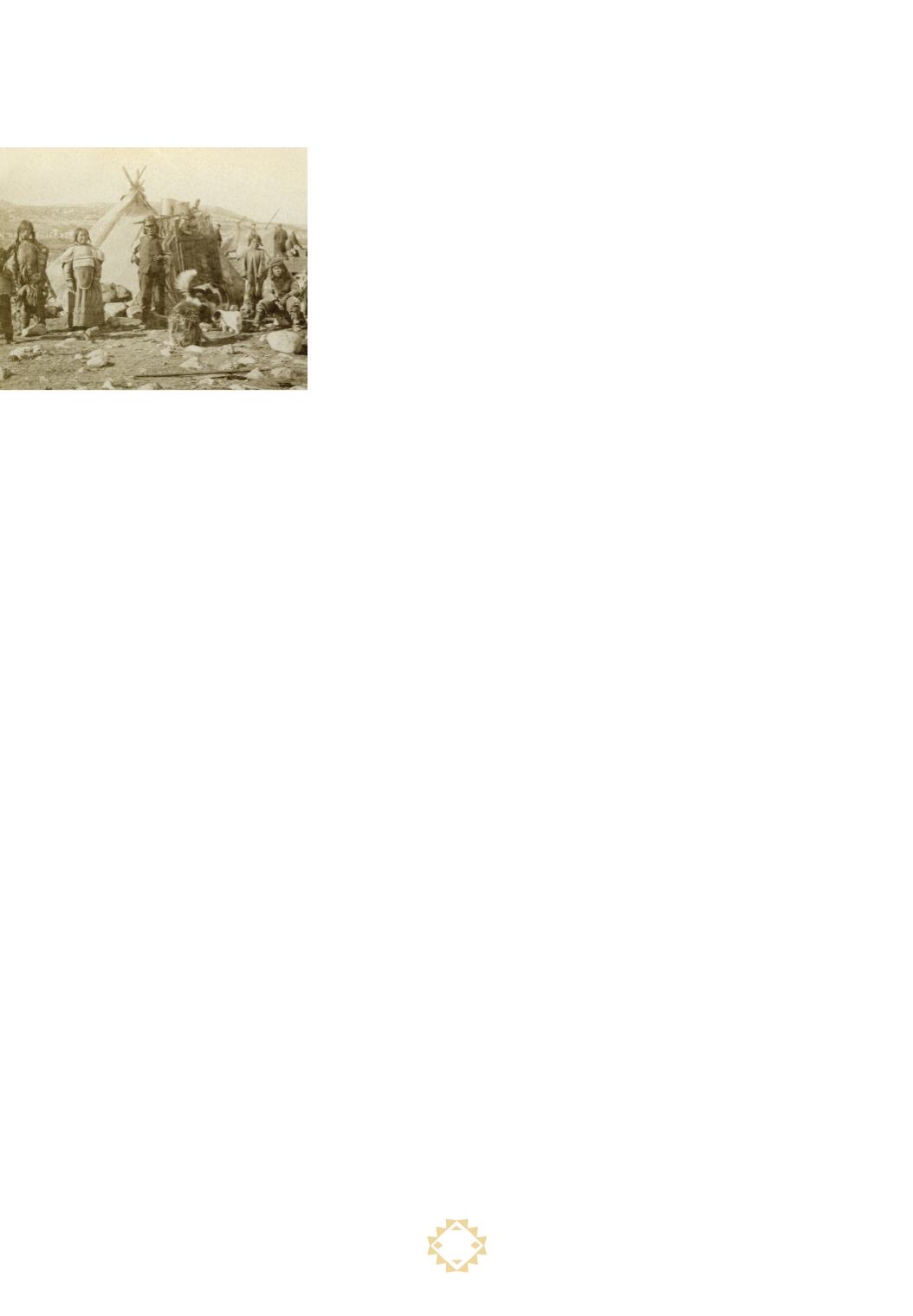
remained similar enough that an Inuk could com-
municate with people from most other Inuit bands,
no matter where they lived.
Most Inuit bands lived near the coasts of the
Pacific, Atlantic, or Arctic oceans, although some
lived inland. Some Inuit bands set up permanent or
semi-permanent villages. A village might have as
few as 10 to 50 people, or it might have a population
in excess of 800. Many Inuit spent the winter in villages but then
split up into single families to live as
NOMADIC
hunters.
For summer hunts, families often lived in cone- or dome-
shaped tents. The tent frames were constructed of driftwood or
whalebone. They were covered with sealskin or caribou hide. But
the Arctic winter called for more substantial shelter. Throughout
most of the Arctic, the Inuit lived in
karmats
. These semi-subter-
ranean homes had rectangular walls made of stones or logs and
were covered with thick sod. People entered the karmat through
a long underground tunnel to keep out the cold. An animal-skin
flap served as a door. Inside, the karmat had 1 to 3 rooms, each
about 10 square feet (0.9 sq m). Stretched animal intestines served
as windows or skylights. Coastal Inuit heated their homes with the
fat from sea mammals, called blubber. A home heated with blub-
ber could reach 90 ˚F (32 ˚C), even in the heart of winter.
In some villages, the Inuit also built larger structures known
as
karigi
or
kashims
. These buildings were used for ceremonies,
dances, sweat baths, and storytelling. In some communities, they
also served as sleeping quarters for the men of the village.
Although people today tend to associate the Inuit with igloos,
only the Inuit of northern Canada built igloos. These were used as
temporary shelters while moving or hunting in the winter. It took
an Inuit man about an hour to build an igloo. First, he used a long
Some Greenland
Inuit tents were
made entirely
of caribou skins,
and large stones
secured their
bases.
10


